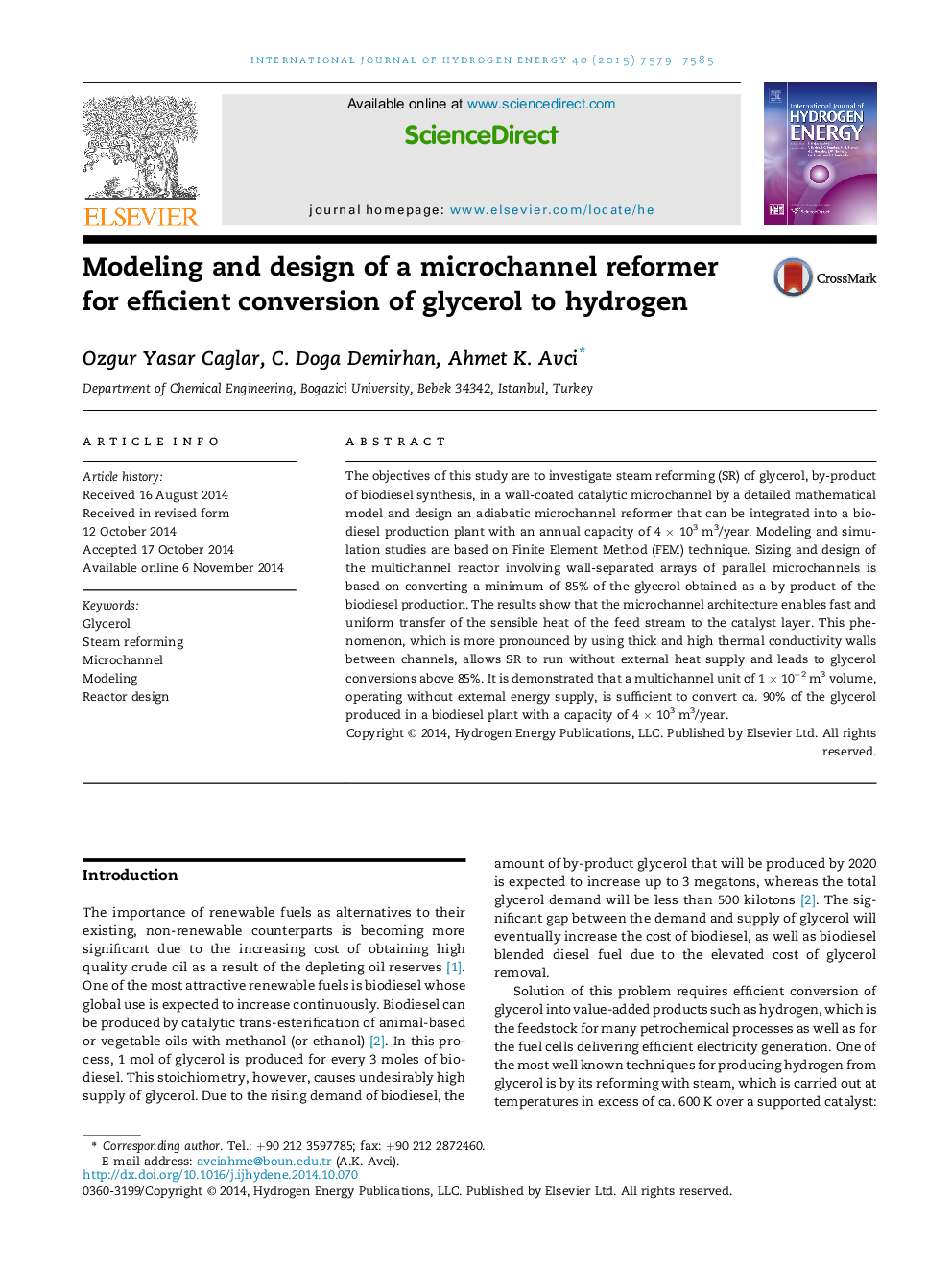| Article ID | Journal | Published Year | Pages | File Type |
|---|---|---|---|---|
| 1279731 | International Journal of Hydrogen Energy | 2015 | 7 Pages |
•Steam reforming of glycerol is simulated in a catalytic microchannel reactor.•Microchannel architecture enables effective heat transfer along the reactor.•H2 production is favored by thicker and high thermal conductivity wall materials.•Higher inlet temperatures increase H2 production.•A 5400 channel, 1 × 10−2 m3 reactor can be used in a medium-scale biodiesel plant.
The objectives of this study are to investigate steam reforming (SR) of glycerol, by-product of biodiesel synthesis, in a wall-coated catalytic microchannel by a detailed mathematical model and design an adiabatic microchannel reformer that can be integrated into a biodiesel production plant with an annual capacity of 4 × 103 m3/year. Modeling and simulation studies are based on Finite Element Method (FEM) technique. Sizing and design of the multichannel reactor involving wall-separated arrays of parallel microchannels is based on converting a minimum of 85% of the glycerol obtained as a by-product of the biodiesel production. The results show that the microchannel architecture enables fast and uniform transfer of the sensible heat of the feed stream to the catalyst layer. This phenomenon, which is more pronounced by using thick and high thermal conductivity walls between channels, allows SR to run without external heat supply and leads to glycerol conversions above 85%. It is demonstrated that a multichannel unit of 1 × 10−2 m3 volume, operating without external energy supply, is sufficient to convert ca. 90% of the glycerol produced in a biodiesel plant with a capacity of 4 × 103 m3/year.
